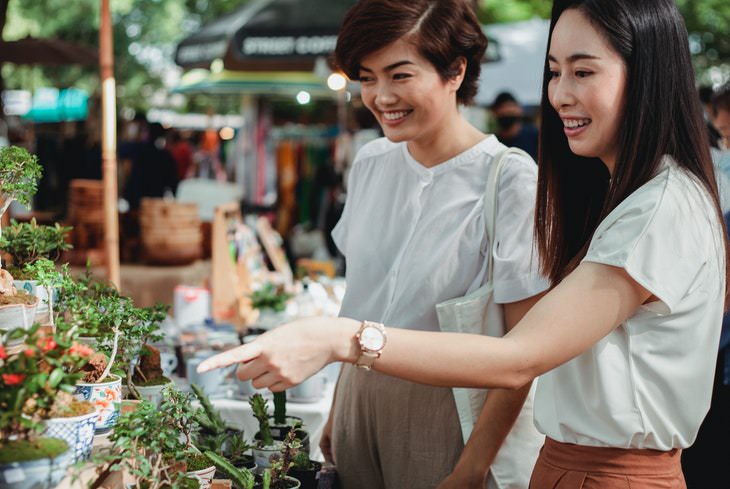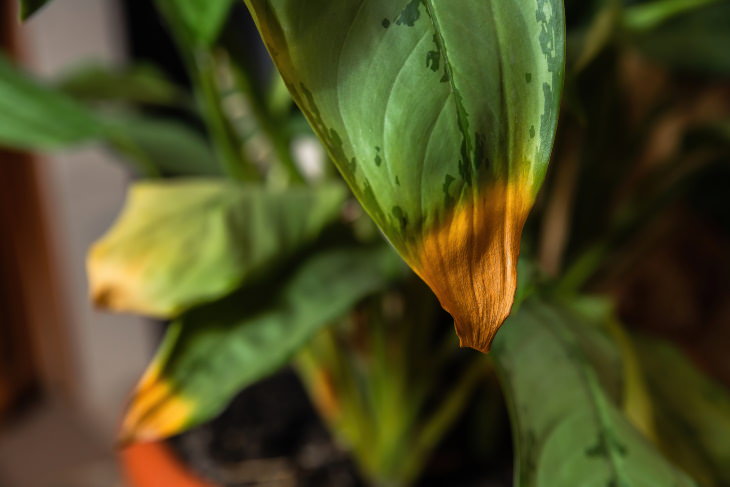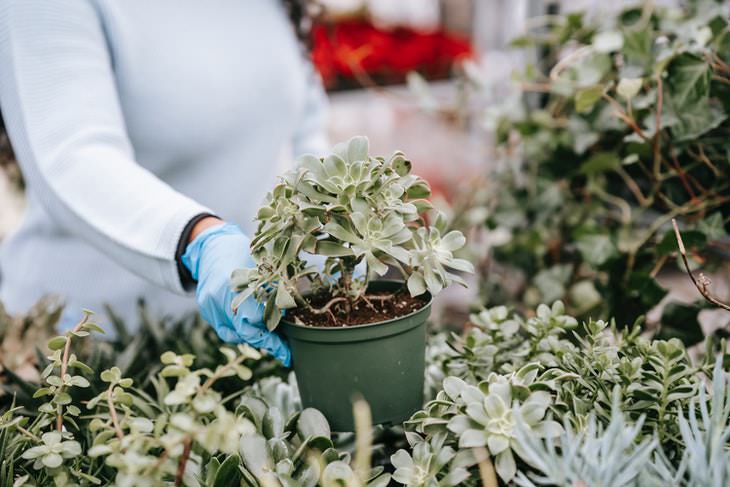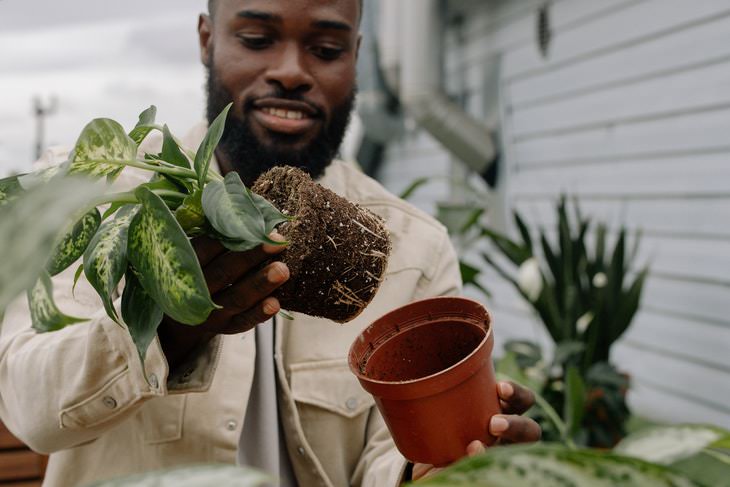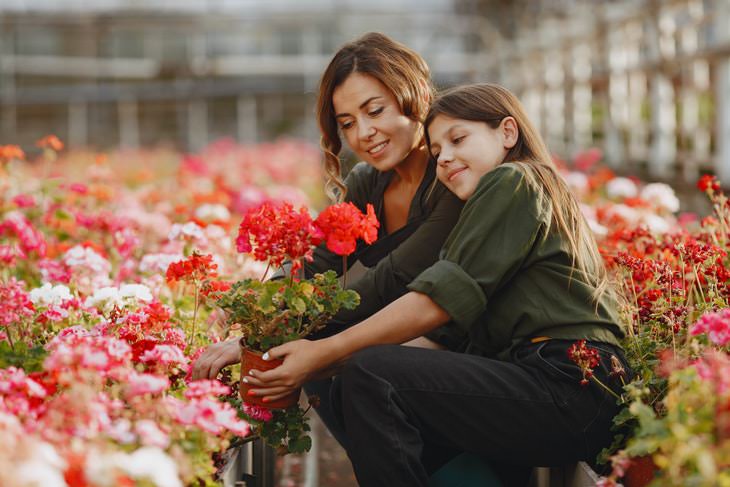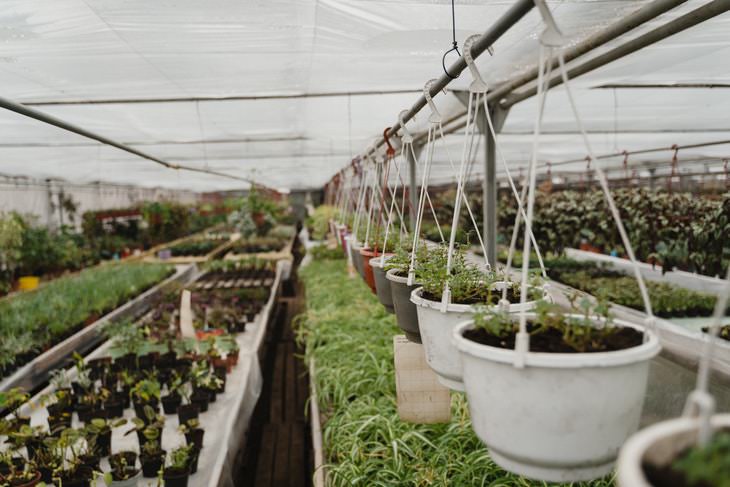1. Check for insects and disease
Dealing with a houseplant pest outbreak is a disheartening experience for every plant grower. And while stopping pests from flooding your plants is a topic of its own, it’s important to realize that pest prevention starts at the garden center.
Buying a pest-ridden plant means that it’s less likely to survive in your home, but also endangers your existing plant collection. Avoid bringing pests with you from the plant shop by thoroughly examining every plant you decide to purchase for pests. Look closely at the stem of the plant, turn and look underneath the leaves, and inspect the topsoil and the drainage holes.
Apart from searching for bugs congregating on the plant, see if there is any white fuzz, spiderwebs, white dust, sticky sap, holes, or brown dots on the leaves and young parts of the stem. All of these signs can point to pests, and it’s best that you refrain from purchasing a plant that exhibits any of these symptoms.
2. Examine the foliage
Most houseplants are very vocal and will tell you when they’re in distress. You just need to know what to look for. The leaves are the first to show you that a plant has pests or some kind of disease, or that it is grown in suboptimal conditions in general. In most plants, the leaves should be succulent and lively and have a vivid and clear color.
Any wilting, discoloration, or browning of the leaves is a sure sign of stress. Also look out for leaves that look warped or disfigured, as this could be a sign of disease. Steer clear of plants with unhealthy-looking leaves, as they may not survive the additional stress of repotting or moving them to a new location.
3. Consider the overall shape of the plant
Even if you’re buying a young and small plant, it should have multiple growth points and a full and compact appearance overall. Look into the pot and see how many stems there are in the pot too. The more, the bushier and healthier your plant really is.
Lanky and sparse plants are bound to become only thinner and longer once they live in your home for a while. Spindliness, sparse leaves, and small leaves may also be a sign that the plant wasn’t properly cared for at the nursery or plant shop. Some leaves may have fallen off, the plant could have been living under insufficient light or not fertilized, repotted, and watered properly. Whatever the cause of the stunted and spindly growth, a houseplant with these characteristics is best avoided.
4. Don’t ignore the root system
Although you can tell a lot by looking at the leaves and the stems of the plant alone, you won’t get the full picture of a plant’s health until you peek at the roots too. Start by checking the bottom of the nursery. Are there any roots peeking out of the drainage holes? If so, this is a sign that the plant is slowly growing out of its current home and will need to be repotted soon. Otherwise, it will become too root-bound soon, and it may experience stunted growth and other problems. While this is not necessarily an issue, it’s a factor that you must consider when purchasing the plant, as you may need to buy a bigger pot and a proper potting mix along with the plant.
If a houseplant you consider buying comes in a plastic nursery pot, you can also try squeezing the pot a little and popping the plant out for a minute, and examining the root system. This may not work with all plants, but it’s an excellent test when available. Inspect the root ball of the plant. The roots should have a light even color and should be succulent and firm to the touch. If you see any mushy, brown, or black areas in the root system, this is a sure sign of root rot, and it’s best to stay away from this plant. Likewise, it’s best to avoid plants with many broken roots or a rootball with signs of mold.
5. Buds or flowers?
You may be instantly drawn to those plants in the nursery that are already covered in colorful flowers, and we cannot blame you. However, keep in mind that plants that are already blooming will stay in blossom for a shorter period of time than those that are in the bud stage. Therefore, we recommend that you purchase a plant that’s only preparing to bloom in the nursery. This way, you’ll get to enjoy the beautiful flowers at home for much longer.
6. It’s not all about the plants…
The nursery or plant shop itself gives you a good idea of the plants that they sell. A good plant nursery or garden center should look clean and well kept. After all, if their pots and shelves are dirty or dusty, how can you be sure that the shop is keeping tabs on their pest control or watering schedule?
Likewise, if you see a lot of ungroomed, wilted, or sick plants in the garden center in general, chances are that all of their plants are not being cared for. So, if something about the plant shop itself doesn’t feel right, it’s best to avoid purchasing.
A few more tips before you leave:
- Avoid purchasing root-bound plants at the end of summer. Repotting a plant in fall or winter is generally not advised. So, if you’ll buy a root-bound houseplant at the end of the growing season, it may not survive the winter whether you decided to repot it or not.
- Sometimes pests or plant diseases can be dormant or not apparent at first glance. Whatever new plants you purchased, quarantine them in your home for a couple of weeks before placing them next to your other plants. Just in case.
- Be wary of plants that are on sale. Getting a bargain is always great, but triple-check discounted plants, as these may have unpleasant surprises in the form of pests and weeds hiding in them.
Share these tips with other plant enthusiasts!

